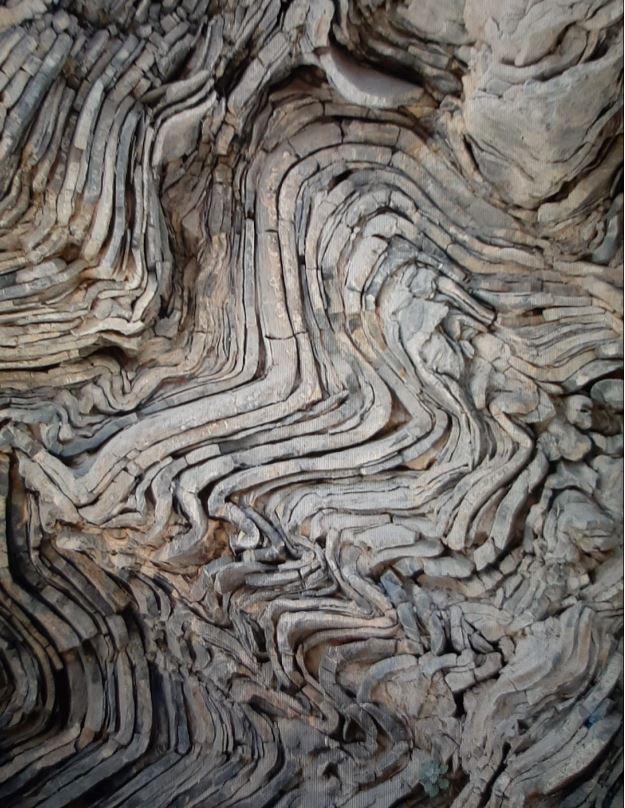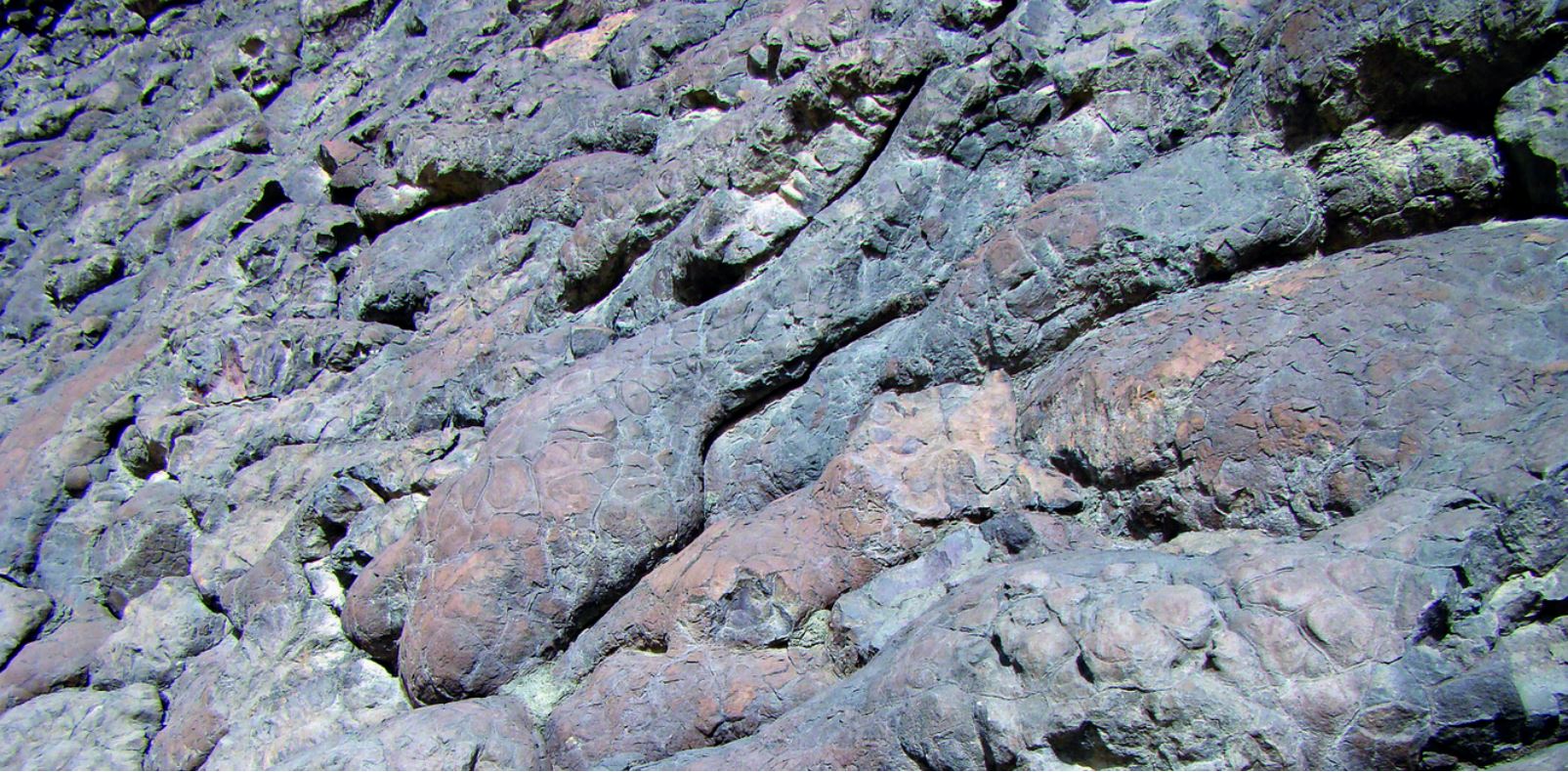When I did the mountain safari in Jebel Harim in Musandam last time I was lucky to meet David, a professional geologist from Australia. He told me a lot about the rocks in this area and he promised to write some about it for my blog. There it is: „Enjoy Omans ‘Mountains of the Moon’. When you arrive in Muscat the landscape looks like you are walking on the Moon! If you visit the National Museum you may notice a real Moon rock given to Oman from the Apollo moon missions – look closely at the little bit of rock and see how it looks like the rocks around Muscat? They are the same sort of dark green rock, rich in iron and magnesium rather than the more typical pale grey to yellow rocks of silica or calcium we normally see on land. On Earth these dark green rocks usually at the bottom of the ocean which normally gets pushed down beneath the continents but in Oman a rare geological event forced the ocean rocks up onto the crust. This unusual event about 100 million years ago not only gives you the chance to walk around on ‘moon rocks’ today but the weight of these rocks pushed the rest of Oman down so it heated up and produced the oil and gas that financed the development of all the first-world infrastructure of great roads, mains electricity, clean tap water and flushing toilets that makes it such a pleasant place to travel around. This could be a good start to learn more: James Creswell runs a dedicated 10 day geology excursion to Oman.
Details of the trip are here https://www.geoworldtravel.com/oman.php and here is an hour plus Youtube video by James on the Geology also https://www.youtube.com/watch?v=QKJByX_-DdQ . You are welcome but do not thank me too soon. As you watch the video there will be whole sentences of technical words that a non-geologists will have never heard before! Geology is like Law or Medicine as a technical profession full of complex issue using their own technical language. Just to grasp the basics of geology is 3-5 years of University training, with competence not really achieved for at least another 5 years working as a practitioner.

To understand the geology of an area in a meaningful way you really need to visualize the rocks in 3 dimensional space, with them sometimes being absent because they have been removed by erosion, sometimes still being present but hidden because they are buried beneath the surface. This three dimensional distribution across tens to hundreds of kilometers is further complicated by having evolved across the fourth dimension of time. That time is on scales beyond human experience with events spanning tens to hundreds of millions of years so that we never get to observe and test our ideas because we mere mortal humans simply don’t live long enough! I am currently watching a new BBC documentary series called ‘Earth’ that would actually be a good general introduction to many of the geology concepts so well exposed in Oman https:// en.wikipedia.org/wiki/Earth_(2023_TV_series). A slightly older series called ‘Voyage of the Continents’ also does a good job of explaining how the fundamental geology process of Plate Tectonics creates, over time, the wide variety of rocks we can observe in different places. Yes the system is complex but it is not chaotic so with practice and experience it can be understood. https://www.imdb.com/title/tt3696480/” Thank you David for sharing this interesting information with us. I am sure it will be a challenge to dive deep into this topic.

